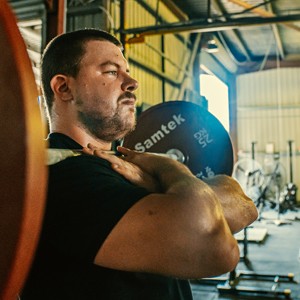Optimising Your Workout With These 5 Tips to Improve Your Front Squat

Let’s be honest: most of us can look like amateurs trying to perform the front squat! We go from a confident swagger from barbell curls, over to the barbell rack for some front squats with the jitters. And it’s totally normal; even for season lifters, how to do a front squat correctly can be notoriously difficult.
But front squats are one of the best ‘bang for your buck’ exercises that you can do in the gym.
The key benefits of front squat are:
- Building strength and mass in the quadriceps
- Superior posture
- Increased core stability.
So we’ll look at what proper form looks like, how to warm up to achieve optimal front squat form, how to use progressive overload to get stronger, why varying rep ranges might help, and how accessory exercises will help your front squat technique and strength. Let’s go!
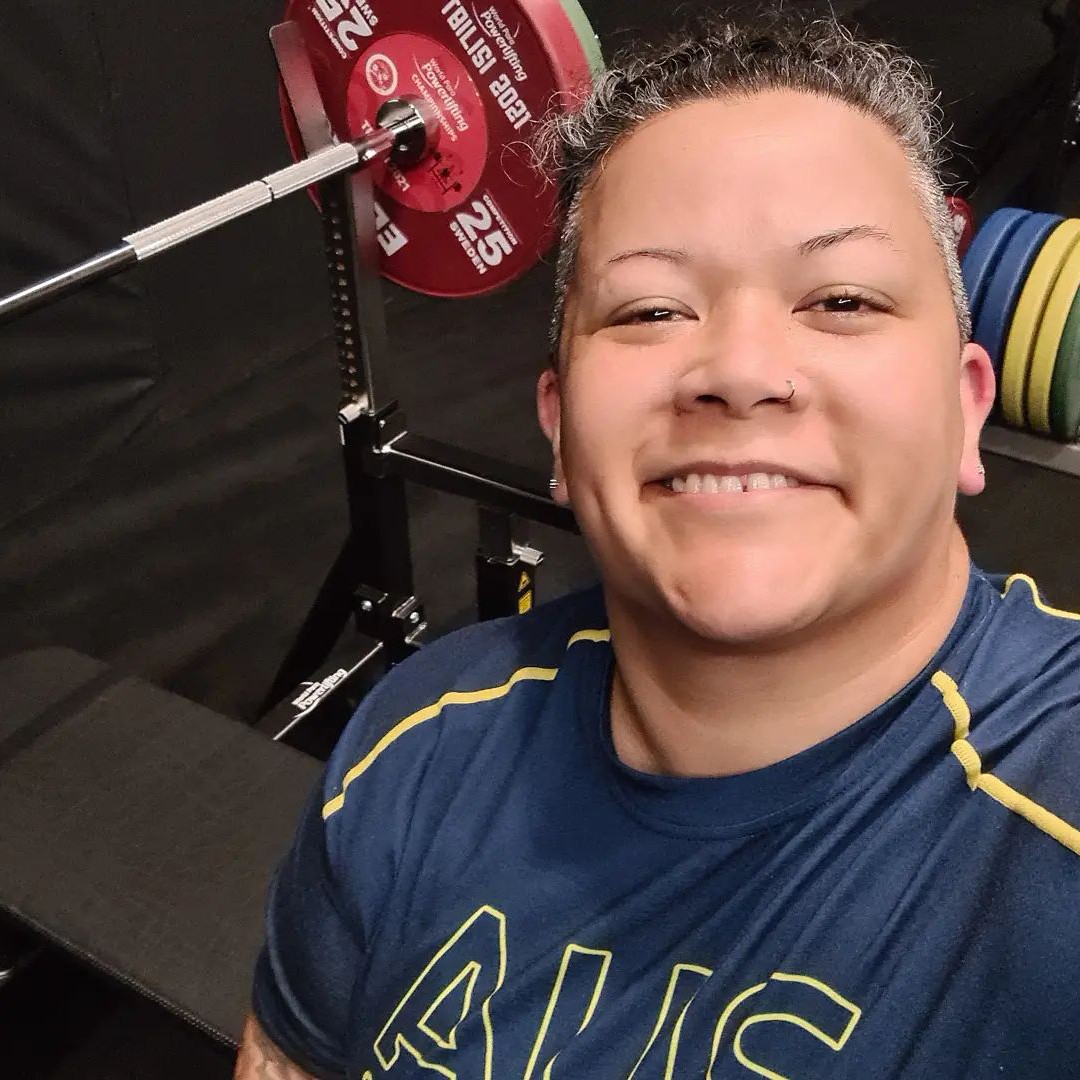
How to do a front squat
Tip #1: Proper front squat technique
The correct front squat form is king for getting the best results and reducing your chance of injury. For optimal front squats form, start with proper positioning and maintain your good form throughout the entire movement.
Here's how to do a front squat:
- Set-up: Start by standing with your feet shoulder-width apart, holding a barbell in front of your body with your hands just outside shoulder-width. The barbell should be resting on the tops of your shoulders, not on your neck. Keep your elbows high and pointing forward to maintain the bar's balance.
- Descent: Begin the squat by bending at the hips and knees, keeping your back straight and chest up. Lower your hips back and down, making sure your knees track over your toes. It’s important to keep your elbows high throughout the descent to keep the barbell in place.
- Bottom Position: At the bottom of the squat, your thighs should be parallel to the ground and your hips should be just below your knees. Your knees should be in line with your toes and your weight should be evenly distributed between your feet.
- Ascent: To come back up, push the floor away through your heels, keeping your knees and hips extended. Stand up straight, finishing the squat by standing tall with your hips and knees fully extended.
- Repeat: Repeat the movement for the desired number of reps, focusing on maintaining proper front squats form and technique throughout the entire exercise.
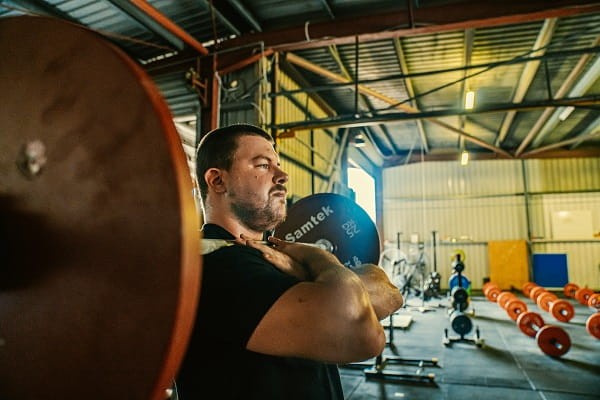
A raised heel for better front squat form
The other thing to consider is having a raised heel when you perform front squats. And you can do this by standing on a 2.5 or 5kg plate.
The first benefit is improved ankle mobility by allowing you to maintain a more upright torso position. Secondly, it can shift the weight more towards the midfoot, which can reduce strain on the knees and lower back, thus reducing the risk of injury. Finally, a raised heel can also allow for greater activation of the quadriceps, which can lead to greater quadriceps development and improved performance.
However, it's important to note that raised heels are not necessary for front squats and may not be appropriate for all lifters. It's best to consult a qualified coach or trainer to determine what's best for your individual needs and abilities.
So, by following these steps and keeping your form in check, you'll get the most out of your front squat and reduce the risk of injury – and look just as good as when you’re pumping out bicep curls!
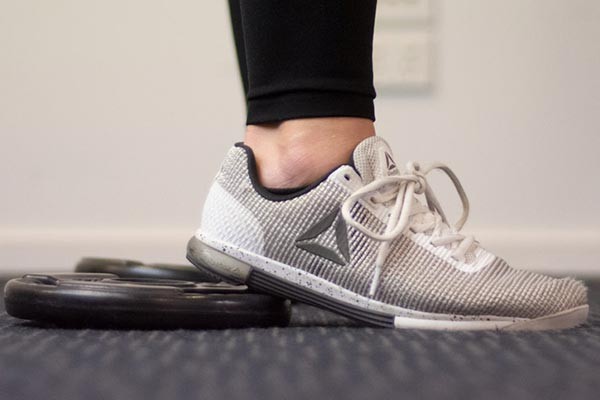
Correct breathing for a better front squat technique
Breathing properly during front squats is great for not only safety but performance. So, here’s how to do it for improved front squat benefits:
Before:
- Stand with your feet shoulder-width apart and your toes pointing forward.
- Take a deep breath through your nose, aiming to fill the lower half of your lungs with air. Think of it as belly breathing to stop the shoulders moving.
- Brace your core by tightening your abs and exhale the air slowly through your mouth.
- Repeat this process 2-3 times to fully prepare your body for the exercise.
During:
- Begin the front squat by descending down into a squat position while keeping your core tight and chest up.
- As you descend, inhale deeply through your nose, filling your lungs with air.
- Once you reach the bottom of the squat, hold your breath and brace your core for stability.
- Begin to push back up to the starting position while exhaling slowly through your mouth.
- Repeat this breathing pattern for each repetition of the front squat.
Nailing all of this can help stabilise the spine and help you maintain proper form, reducing the risk of injury.

Warming up for front squat benefits
Most lifters give up on front squats because they find them too difficult – and that’s generally because they’re too stiff – that is to say, not warmed up enough. So let’s look at how to get your breathing fire ahead of some front squat sets:
Tip #2: Warm-Up and Improve Mobility
Improved mobility from your warm-ups is critical; warming up helps to increase your body temperature, reduce muscle stiffness, and prepare your joints and muscles for the workout ahead.
This results in better reps, less chance of injury and here’s how to do it:
- Dynamic stretching: Dynamic stretching, such as leg swings or high knees, is a great way to warm up your legs and hips for the front squat. This type of stretching helps to activate your muscles, improve range of motion, and prepare your body for the workout.
- Foam rolling: Foam rolling can help to release muscle tension and improve mobility. Spend a few minutes foam rolling your legs, hips, and lower back to help loosen up tight muscles and prepare your body for the front squat.
- Warm-up sets: Before jumping into your main sets, perform a few warm-up sets with a lighter weight. This can help to increase your heart rate and prime your muscles for the heavier sets ahead.
Specifically, focusing on spine mobility as a warm-up before front squatting is very important.
If you lack mobility through the mid-spine (also called t-spine) you’ll find your elbows start to drop toward the floor, your back begins to round, and your torso may be more forward-leaning. Improving your t-spine mobility will help keep your elbows ‘up’ while squatting, maintain a neutral spine, and assume an upright position while squatting.
One of the easiest ways to improve your t-spine mobility is to use a foam roller:
- Place the foam roller on the floor and lie on it with your mid-back
- Breathe out and arch your back over the foam roller with your arms overhead
- Hold this position for 30-60-seconds before flexing your spine and curling forward into a mini-crunch
- Repeat this process 2-3 times.
Additionally, your t-spine mobility might be lacking because of tight lat muscles.
If you still find you’re lacking t-spine mobility after implementing the foam roller exercise, then check out these exercises or this handy Thoracic Extension Mobility Exercises video.
By incorporating these tips into your warm-up routine, you'll be able to perform the front squat more effectively and reduce the risk of injury, sucking up all that’s on offer from front squat benefits. Remember: if something feels painful, Stop. Your body always knows, so listen to it!
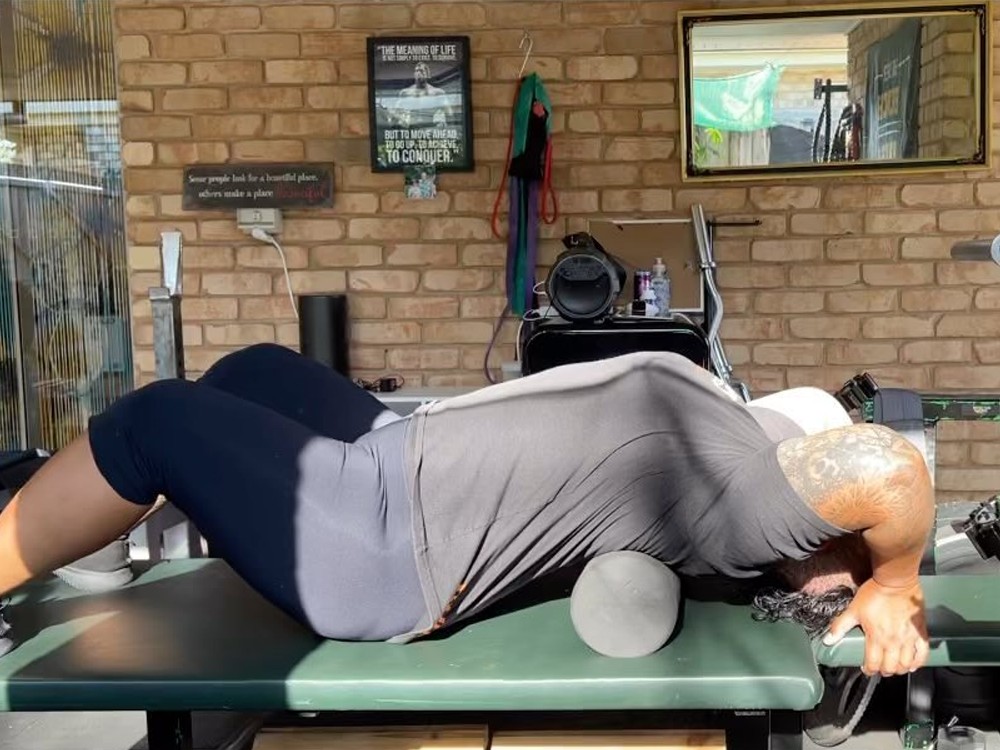
How to ensure you get the best front squat benefits
Tip #3: Incorporate Progressive Overload
Progressive overload is a principle of strength training that involves gradually increasing the weight you lift over time in order to continue making progress and improving your strength. Like anything, the more you challenge yourself with the next level, the more you “grow.”
And this principle applies to everything you do in the gym: from your aforementioned bicep curls to your front squat. So, here are a few tips for incorporating progressive overload into your front squat routine:
- Start with a lighter weight: Begin your front squat routine with a lighter weight, and gradually increase the weight each week as you get stronger.
- Keep track of your progress: Write down the weights you use for each set, and strive to increase the weight each week by a small amount.
- Focus on proper form: While increasing the weight, it's important to maintain proper form and technique, even if that means using a lighter weight. Don't compromise form for the sake of adding weight to the bar.
- Vary your rep range: Varying your rep range can also help you incorporate progressive overload into your front squat routine. For example, you could start with 3 sets of 8 reps with a lighter weight, and then gradually increase the weight and decrease the reps as you get stronger.
By incorporating progressive overload into your front squat routine, you'll keep making progress and improve your strength over time. The other way to improve your front squat form is with varying rep ranges. Let’s take a look at that:
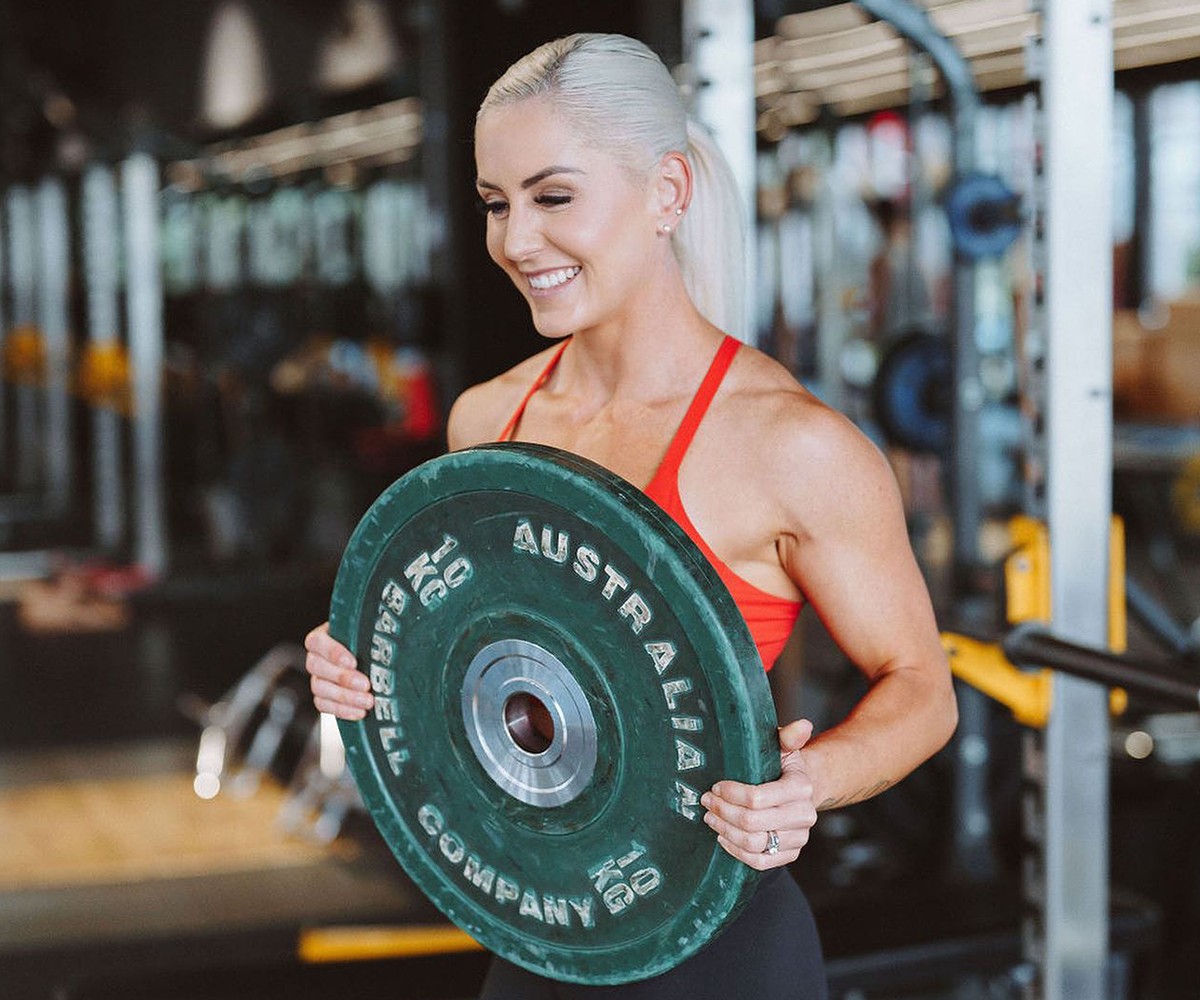
Improving front squat benefits with varying rep ranges
Tip #4: Vary Your Rep Ranges
Now if you’re training for muscle strength, higher reps aren’t going to help you. That’s strength training 101.
However: when you’re first starting out, higher reps can help you get the form right. It’s far easier to achieve correct front squat form when using just the bar, or 20 kilograms on both sides, compared to loading it up and injuring yourself and achieving zero front squat benefits!
So, begin with lighter weight, and as you get more confident, work towards 1 to 5 repetitions per set with 80% to 100% of your 1-repetition maximum (1RM), for optimal strength gains.
The other thing is to try lifting with a kettlebell and performing Goblet squats; that is a good place to start before heading to the rack.
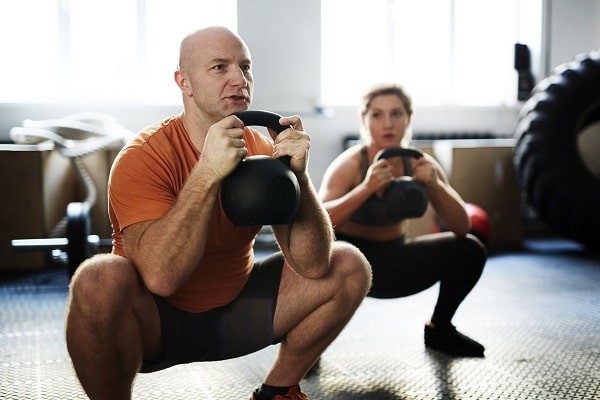
Better front squat form with accessory exercises
Tip #5: Incorporate Accessory Exercises
Most of us are sitting down all day, and really need to perform exercises that “awaken” our muscles and joints. This gets us to a place where performing front squats is far easier.
I’m talking specifically about strengthening your core, hips, and legs, which all improve your front squat form.
So, here are a few tips for selecting and incorporating accessory exercises that will help improve your front squat:
- Target the core: Incorporating exercises like planks, Russian twists, or bird dogs can help to strengthen your core and improve your stability during the front squat.
- Strengthen the hips: Exercises like glute bridges, hip thrusts, or lateral band walks can help to strengthen your hips, improving your overall form and power during the front squat.
- Focus on the legs: Exercises like calf raises, lunges, or Bulgarian split squats can help to strengthen your legs and improve your power and stability during the front squat.
By incorporating accessory exercises into your front squat routine, you'll be able to address any imbalances you may have, and strengthen specific muscle groups, helping you to perform the front squat more effectively and efficiently. Remember to choose exercises that will target the specific areas you want to improve, and make sure to incorporate them into your routine regularly.
So, that’s it!
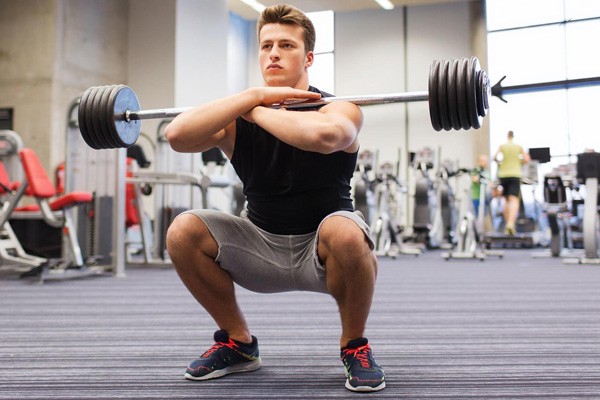
By getting skilled at front squats, you’ll be greeting strength and mass in your quadriceps, better posture, and better core stability. And you’ll achieve this by maintaining proper form and technique to avoid injury and see maximum results, warming up and improving mobility to perform the front squat more effectively, incorporating progressive overload to continue making progress and improving strength, lifting a lighter load to help get your form better where needed, and incorporating accessory exercises to address imbalances and strengthen specific muscle groups.
Nail all this, and your front squat will look and be just as good as your bicep curls. Maybe better!

Hani Watson's a competitive powerlifter who won bronze while representing Australia at the 2022 Birmingham Commonwealth Games.
More about Hani WatsonReferences:
- Reinold, M., 2021. Easy Thoracic Spine Mobility Exercises Everyone Can Perform. [online] Mike Reinold. Available at: https://mikereinold.com/simple-thoracic-spine-mobility-exercises-everyone-can-perform/.
- Schoenfeld BJ, Grgic J, Van Every DW, Plotkin DL. Loading Recommendations for Muscle Strength, Hypertrophy, and Local Endurance: A Re-Examination of the Repetition Continuum. Sports (Basel). 2021 Feb 22;9(2):32. doi: 10.3390/sports9020032. PMID: 33671664; PMCID: PMC7927075.
